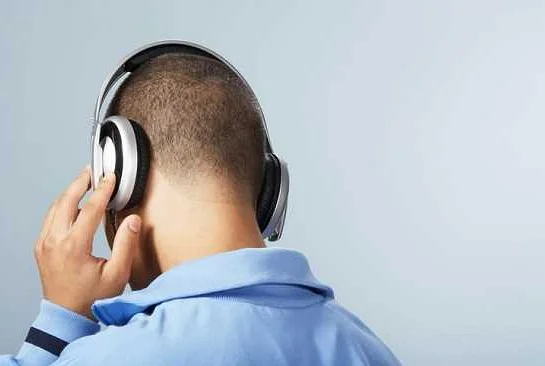Headphones and Hearing Loss: The Hidden Danger
Содержимое
Discover how prolonged use of headphones can lead to hearing loss and learn tips to protect your hearing while enjoying your favorite music.
In today’s modern world, it is almost impossible to go a day without seeing someone wearing a pair of headphones. Whether it is on the bus, at the gym, or even just walking down the street, we are constantly surrounded by individuals plugged into their favorite tunes. However, as the popularity of headphones continues to rise, so does the concern over their potential impact on our hearing.
Many people wonder, can headphones really cause hearing loss? The answer is a resounding yes. Prolonged exposure to loud sounds, such as those emitted by headphones, can lead to permanent damage to our hearing. The reason behind this lies in the delicate structures of our ears, specifically the hair cells in the cochlea that are responsible for transmitting sound signals to our brain.
When we listen to music at high volumes through headphones, these hair cells are subjected to excessive vibrations and stress. Over time, this can cause these cells to become damaged or even die off. Once these hair cells are gone, they cannot regenerate, leading to permanent hearing loss. With the increasing popularity of noise-canceling headphones, the risk of hearing damage is further amplified, as users tend to turn up the volume to drown out background noise.
It is crucial for individuals to be aware of the potential risks associated with prolonged headphone use and take necessary precautions to protect their hearing. This includes limiting the volume to 60% of the maximum capacity, taking regular breaks to allow the ears to rest, and using over-ear headphones instead of in-ear ones, as they offer better sound isolation and minimize the risk of damage.
How Do Headphones Affect Our Ears?

Headphones have become an integral part of our daily lives, allowing us to enjoy music, watch videos, and make calls without disturbing others. However, it’s important to understand how headphones can affect our ears and potentially lead to hearing problems.
When we use headphones, the sound is delivered directly into our ears at a high volume and close proximity. This can cause damage to the delicate structures of the inner ear, including the hair cells responsible for translating sound waves into electrical signals that our brain can interpret.
One of the main concerns with headphones is the increased risk of noise-induced hearing loss (NIHL). Prolonged exposure to loud sounds, such as music played at high volumes, can lead to permanent damage to our hearing. The use of headphones may also lead to a condition known as tinnitus, which is characterized by ringing, buzzing, or hissing sounds in the ears, even in the absence of external noise.
Another factor to consider is the duration of headphone use. Extended periods of headphone use can contribute to ear fatigue, which can cause discomfort, pain, and temporary hearing loss. It’s important to take regular breaks and give your ears a rest to prevent any long-term damage.
| Noise-induced hearing loss (NIHL) |
| Tinnitus |
| Ear fatigue and temporary hearing loss |
To minimize the negative effects of headphones on our ears, it’s crucial to practice safe listening habits. This includes keeping the volume at a reasonable level, taking regular breaks, and using noise-canceling headphones to reduce the need for high volumes. Additionally, investing in high-quality headphones that provide a balanced sound can help prevent potential damage.
Remember, our ears are delicate organs, and it’s important to take care of them to preserve our hearing for years to come.
The Link between Volume and Hearing Loss
Exposure to high volume levels through headphones is a significant risk factor for hearing loss. When the volume of sound is too loud, it can cause damage to the delicate structures in the ear, leading to permanent hearing loss.
Our ears are designed to perceive sound within a certain range of decibels. Prolonged exposure to sounds above this safe threshold can result in noise-induced hearing loss (NIHL). Headphones have the potential to reach high volume levels that surpass this safe range, especially if used improperly.
One of the main issues with headphones contributing to hearing loss is the proximity of the sound source to the eardrums. Unlike speakers, which emit sound waves that disperse into the environment, headphones deliver sound directly into the ears. This close proximity increases the intensity of the sound and can cause more damage to the delicate structures of the inner ear.
In addition to the proximity factor, the duration of headphone use also plays a crucial role in hearing loss. Prolonged exposure to high volume levels increases the likelihood of permanent damage to the auditory system. It is essential to take breaks and limit the duration of headphone use, especially when listening to loud music or other audio content.
To protect your hearing while using headphones, it is recommended to follow the 60/60 rule: listen at no more than 60% of the maximum volume for no more than 60 minutes at a time. This rule helps to reduce the risk of hearing damage while still allowing for enjoyable audio experiences.
Overall, it is crucial to be aware of the link between volume and hearing loss when using headphones. Taking preventative measures, such as using noise-cancelling headphones, setting volume limits, and taking regular breaks, can help safeguard your hearing and mitigate the risk of long-term damage.
Factors that Increase the Risk of Hearing Loss

Hearing loss can be caused by several factors, and while headphones are often associated with this condition, they are not the only cause. Understanding these factors can help you take steps to protect your hearing.
Volume: One of the primary factors that increase the risk of hearing loss is exposure to loud noises. Listening to music or other audio through headphones at high volumes can damage the delicate hair cells in the inner ear, leading to hearing loss over time. It is important to be aware of the volume level and limit your exposure to loud sounds.
Duration: The length of time you spend listening to loud sounds also affects the risk of hearing loss. Prolonged exposure to loud noises, even at lower volumes, can still cause damage to the hair cells in the inner ear. It is recommended to take regular breaks from using headphones and give your ears time to rest and recover.
Frequency: The frequency of headphone use can also contribute to the risk of hearing loss. If you frequently use headphones, especially at high volumes, you are more likely to experience hearing damage. It is important to balance your headphone use and give your ears a break to reduce the risk of long-term damage.
Pre-existing conditions: Certain pre-existing conditions can increase the vulnerability to hearing loss. Conditions such as ear infections, otosclerosis, and Meniere’s disease can make the ears more susceptible to damage from headphone use. It is essential to consult with a healthcare professional if you have any underlying conditions that may affect your hearing.
Age: Age is another factor that can increase the risk of hearing loss. As we get older, our hearing naturally declines, and prolonged exposure to loud noises can accelerate this process. It is crucial to take extra precautions, such as reducing headphone volume and limiting exposure to loud sounds, as we age to protect our hearing.
In conclusion, while headphones can contribute to hearing loss, it is important to consider other factors that increase the risk as well. By being aware of these factors and taking appropriate measures, such as using headphones at a safe volume and taking breaks, you can help protect your hearing and reduce the chances of developing hearing loss.
Steps to Prevent Hearing Damage from Headphones

While headphones can potentially cause hearing loss, there are steps you can take to minimize the risk and protect your hearing. Follow these guidelines to ensure you are using headphones safely:
| 1. Limit Listening Time | Avoid prolonged exposure to loud music or sounds through headphones. Take regular breaks and give your ears time to rest. |
| 2. Lower Volume | Keep the volume level at a safe and comfortable level. Experts recommend keeping it below 60% of the maximum volume. |
| 3. Use Noise-Canceling Headphones | Invest in headphones that have noise-canceling capabilities. This can reduce the need to turn up the volume to block out external sounds. |
| 4. Take Breaks | Give your ears periodic breaks by removing the headphones and allowing them to rest. This will help prevent fatigue and prevent long-term damage. |
| 5. Maintain a Safe Distance | Avoid placing the headphones directly against your ears. Keep them at a safe distance to reduce the intensity of sound entering your ears. |
| 6. Use Over-Ear Headphones | Consider using over-ear headphones instead of in-ear headphones. Over-ear headphones can provide better sound isolation, reducing the need for higher volume levels. |
| 7. Be Mindful of Volume | Avoid turning up the volume to drown out background noise. Instead, find a quiet environment or use noise-canceling features to minimize distractions. |
| 8. Educate Yourself | Stay informed about the risks of high-volume listening and the signs of hearing damage. This knowledge will help you make better choices regarding your headphone usage. |
By following these steps, you can enjoy your headphones while minimizing the risk of hearing damage. Remember, prevention is key when it comes to maintaining healthy hearing.